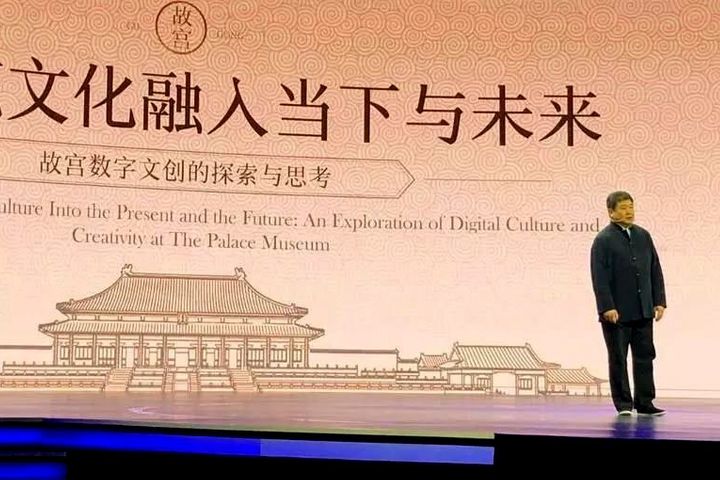 China's Tech-Savvy Forbidden City Charms Tim Cook
China's Tech-Savvy Forbidden City Charms Tim Cook(Yicai Global) March 25 -- The digital transformation of Beijing's Forbidden City, the world's most-visited tourist attraction, has received accolades from visitors, including Apple's Tim Cook. The museum's curator thinks that more can be done.
"Remarkable to see so many cutting-edge apps from the 600-year old @故宫博物院 ! Wonderful way to marry the old and the new to help people around the world learn about Chinese culture," Chief Executive Cook posted on his microblogging Weibo account after his visit to the Ming dynasty site, also known as the Palace Museum, accompanied by curator Shan Jixiang.
Blending the stories and the cultural heritage behind the Palace Museum with modern life activates cultural relics, Shan told Chinese media at a conference yesterday. Traditional cultures can be activated as well as become an important source for content innovation that boosts the cultural industry to reach high-quality growth, Cheng Wu, the vice president of Tencent Holdings and chief executive of Tencent Pictures, said at the same event.
The Forbidden City has partnered with major Chinese tech firms to test innovative ways to preserve and display artifacts. The museum has nine applications with a collective number of 4.5 million downloads, a massively popular online gift shop, and an artificial intelligence-aided monitoring system.
Clickbait Museum
The Palace Museum welcomed a total of 17.5 million visitors last year, hitting a historic high and surpassing the Louvre in Paris. However, Shan is not satisfied with the number. Hundreds of millions or even billions, is the goal, he says.
The aim to reach those eyeballs requires more online marketing. The museum has created panoramic videos on its website, and it aims to attract more young visitors via social media platforms such as Weibo. A post about the Palace Museum's first snowfall this year had over 50 million readers.
Part of the digital transformation project involves making 3D pictures of the vast collection of millions of artifacts, many of which, for example an over 3-meter sculpture of bodhisattva, dated about 1,500 years ago, stand outside as the storage space is limited.
Getting views means reaching multiple platforms. The attraction has its own virtual reality cinema and it has teamed up with documentarists and film producers to make content about the rich history behind the place, as well as created games.
The museum and tech behemoth Tencent Holdings have established an innovation lab to explore blockchain, artificial intelligence and Big Data to protect, research and exhibit cultural relics. Last year, the pair launched a Panorama of Rivers and Mountains song competition, with the theme song inspired by the Northern Song Dynasty painter Wang Ximeng's Thousands of Miles. The piece received 34 million views online in less than 48 hours.
The Palace Museum's official site gathers 891 million visits annually, Shan disclosed previously, adding it earned the revenue of CNY1.5 billion (USD223 million) by selling cultural and creative products in 2017.
Super Security
New technologies have improved security. The site has 3,000 cameras that feed to 65 screens in the control room. "I have served as the curator of the Palace Museum for eighth straight years and not encountered a thief," Shan said.
The Palace Museum penned a contract with telecom giant Huawei Technologies to create a "5G Wisdom Palace" by monitoring each artifact's movements, as well as offer superfast internet to visitors.
Founded in 1965, the museum strives to stay relevant. "In the future, for leisure, citizens will be in a museum or on their way to one," Shan said wishfully.
Editor: Emmi Laine